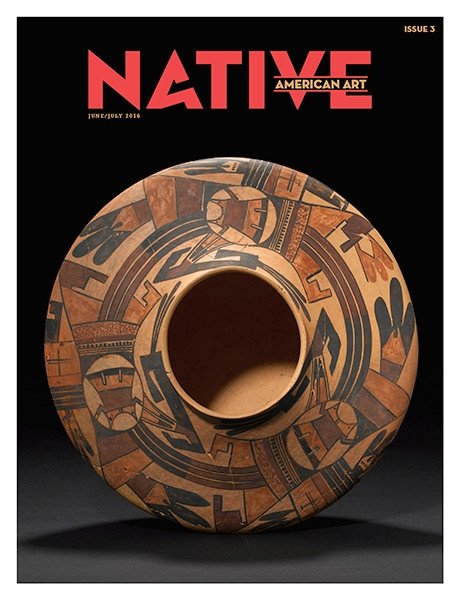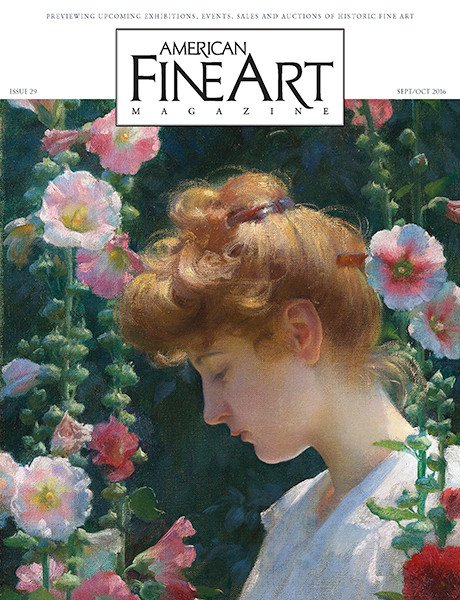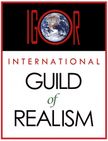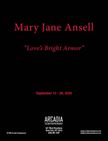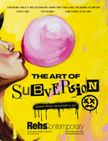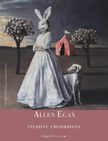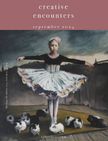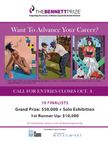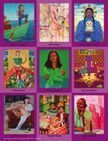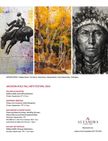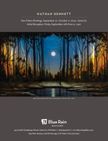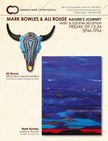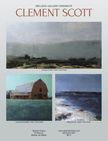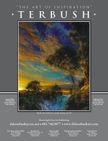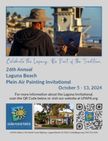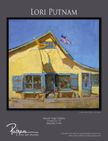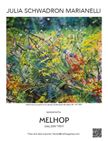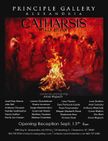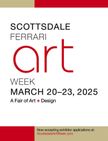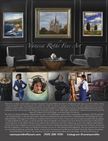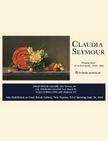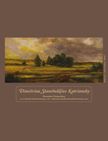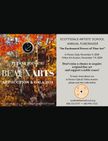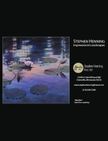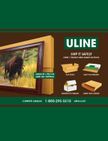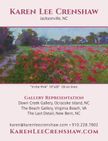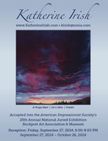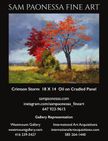The perplexing sound of silence which unites images by Eric Green and Japanese painter Hisaya Taira hums from their work. Taira’s empty urban spaces echo with the absent noise of missing crowds. His impressively detailed cityscapes are improbably vacant, like twilight urban scenes after an apocalyptic abandonment, leaving his cities almost entirely devoid of people. They are painted with an intense focus that underscores their absence—what is not there bearing as much weight as what is. The few who do remain are often nondescript and anonymous, like the security guard in Escalator #34, One World, and the bored, doom-scrolling passenger in Escalator #37.Guards are unnecessary in these uncomfortably sparse, isolated places, where every surface is hard, and the light is brash and grey, or as artificially pink as synthetic bubblegum. Taira says, “I choose subjects to convey the entire situation, not to focus on specific objects. Also, the beauty of the light is important, but I have to avoid simple beauty. This is because I want to depict the strangeness I feel in everyday life, the beauty of a moment in the ordinary, and complex situations where sophistication and unrefinedness coexist.”
 Hisaya Taira, Escalator #34, One World, acrylic on canvas, 257/10 x 354/5.The tall and enigmatic central figures in Bus Terminal are an exception. They huddle close together, conferring and insulated, their forms sculpted from wet, white clothes, while other pedestrians pace through the automation of daily commutes, oblivious to the strange and alien presence of the white ones among them. It is three o’clock in Pennsylvania, yet there are no departures listed, and all but one ticket kiosk is closed. Mysterious and perplexing, the white ones are uncanny visitors from another dimension, tourists from another time, examining the city culture, and planning their next move. It is hard not to imagine them as a sort of self-portrait. Born in Japan, Taira has an outsider view of the American urban landscape, saying, “When I went to America for the first time, I was surprised at how different the cityscapes were from those I had seen in Japan, and felt a sense of freedom from the oppressive Japan. Since then, I have been painting American cityscapes. Since then, the Japanese landscapes I paint have also changed.”
Hisaya Taira, Escalator #34, One World, acrylic on canvas, 257/10 x 354/5.The tall and enigmatic central figures in Bus Terminal are an exception. They huddle close together, conferring and insulated, their forms sculpted from wet, white clothes, while other pedestrians pace through the automation of daily commutes, oblivious to the strange and alien presence of the white ones among them. It is three o’clock in Pennsylvania, yet there are no departures listed, and all but one ticket kiosk is closed. Mysterious and perplexing, the white ones are uncanny visitors from another dimension, tourists from another time, examining the city culture, and planning their next move. It is hard not to imagine them as a sort of self-portrait. Born in Japan, Taira has an outsider view of the American urban landscape, saying, “When I went to America for the first time, I was surprised at how different the cityscapes were from those I had seen in Japan, and felt a sense of freedom from the oppressive Japan. Since then, I have been painting American cityscapes. Since then, the Japanese landscapes I paint have also changed.”
Eric Green, Green Mirrored Room One, graphite, colored pencil and UV varnish on panel, 18 x 16”
On the streets in the open and empty air, Taira continues the mood of abandonment and alienated displacement, as in the enigmatic nocturne Visions. Stools set in a row within the darkened storefront suggest a diner, but the objects in the window display are disjointed and odd. Things are gone. These things remain. Taira paints the space between the poles of being.

Theatre Row points to the performative nature of the paintings, and highlights the emptiness with marquee lights glowing on a dreary box theater that lacks of the decadent glamor and sensuality of the cabaret stage or grand drama. No handsome actors or actresses will ever perform under this austere light. The stage door beneath the lights opens onto a cold, damp reality of bare winter trees in the company of cold steel dumpsters. A car and a truck show red lights at the traffic stop, their drivers departing into the distant mist, away, away, and the anonymous and empty street remains. For Taira, loss and mystery are close companions. He comments, “I think that the characteristics of my paintings are the emptiness of the city and the loneliness of city dwellers. This is felt even more strongly when placed in a crowded urban environment.” These spaces are reminiscences of what still is, these spaces are memories of the present.

Hisaya Taira, Visions, acrylic on canvas, 23 4/5x 35 4/5”
Green’s remarkable drawings of Victorian rooms are especially disconcerting, split across the center, with the bottom of the image repeating the top half. One of the signs of truly extraordinary art seems to be its uncanny peculiarity on first sight, the aura of arrest and quality of weirdness that persists and intrigues, and demands further scrutiny, gradually winning understanding, then fascination. The word “surreal” has become almost meaningless, used for any imagery with the slightest hint of oddity, and at first, perhaps Green’s fascination with the reflected interiors of the old house seems like gratuitous trickery, but these astonishing drawings resist easy dismissal. They are a brilliant and genuine extension of the subtle and truly surrealist questioning of perception that began in the early 20th century. The strangeness of the drawings generates hostility: “I get blamed online now—‘this is not real, this is Artificial Intelligence,’” Green exclaims, “…The amount of hate out there these days!” Yet he wears the dignity and crown of originality as the prize of his dedication to his work. These are works of technical genius, and sophisticated inquiry into what is and what might be.

Eric Green, Green Mirrored Room Five, graphite, colored pencil and UV varnish on panel, 18 x 16”
The mirroring of Green’s drawings turns the ordinary geometry of the rooms into fractured abstractions, and they dwell in the space of sensory disturbance favored by surrealists. They have their origins in Green’s youth. He remembers, “I was a very lonely child, an extremely sickly child, I was in the hospital 22 times, told I was going to die, over and over. It really wasn’t much of a childhood. Both of my parents were alcoholics. I spent a lot of time lying on the floor imagining the world upside down. I was always fascinated by that, especially in a house like this, which is an 1866 Victorian and quite a fancy one at the time. It really intrigued me and I thought, ‘how can I capture this?’ So, I tried painting an upside-down lamp, and it really didn’t work. It just looked like an upside-down lamp. So, I turned it into a postcard, like a big postcard with weathered marks from being shipped through the postal system, and that didn’t improve it any, so I hid it.” But the idea stuck and he found that his drawings of the inverted world worked effectively when they were contrasted with the world in its normal orientation.

Hisaya Taira, Escalator #37, acrylic on canvas, 239/10 x 313/5”
Then he had a strange insight: “I found something that fascinated me. If you blow up one of the mirrored rooms up and stare at it for a while, you’ll realize that the bottom half will become more realistic and three dimensional than the top half, and the top half becomes flatter, and that’s because our conditioning makes us care about what’s on the ground than what’s on the ceiling.” The lamp postcard eventually became Green-Mirrored Room One.

Eric Green, Green Mirrored Room Four, graphite, colored pencil and UV varnish on panel, 18 x 16”
He bought his beautiful 19th-century home in the mid-1990s for $100,000, and spent 17 years renovating it, treating the building like a work of art. The characters of the rooms extended into his imagination and, as he worked, he began looking hard at the way light affected the surfaces he handled. He was fascinated by the house, and took thousands of photographs in his quest to appreciate it, examining them minutely. Soon it became the subject of his carefully observed drawings. But Green is not a photo-copier. He explains, “I don’t like to paint much from photographs. For one thing I find it astonishingly boring; I feel like a pixel pimp…Everyone thinks I draw with such detail—I don’t—it’s all hieroglyphics. All those carpets are faked, they’re just a bunch of squiggles but the mind receives that weight. I learned this from Vermeer, everything’s out of focus. When you hard-edge everything, the mind accepts it less, the eyes accept it less as realism. That’s why I get a little annoyed at the photorealism tag, because that’s not what I’m doing. It’s realism, but it’s actually the way things look. It takes into account the space and the air, and the texture…there are so many things to draw beside the topical map of a photograph.”

Hisaya Taira, Bus Terminal, acrylic on canvas, 29 33/50 x 39 37/100”
But the thousands of photographs he took gave him detailed insight into a particular optical version of perception and allowed him to consider the difference between what he saw with his eyes, and what the camera relayed. “You can really see an object if you explode it on your computer screen, but it still doesn’t mean you can draw it to look like it is,” he says. “You have to almost become the object. It sounds silly as hell. You really have to feel it, and your hand kind of translates it.”

Eric Green, Green Mirrored Room Three, graphite, colored pencil and UV varnish on panel, 18 x 16”
Green created the drawings from direct observation of the house and from his imagination, applying a phenomenon of light he observed from long hours of scrutiny and analysis. He gained an intimate understanding of the molded tin ceiling he installed in one of the large rooms. He says, “You have no idea what it’s like trying to pin a 2-by-4 sheet of tin above your head, and trying to nail these tiny little nails into the strapwork above your head, bouncing, bouncing, bouncing. The drawings of the ceilings are absolutely a labor of love. That’s what I’m talking about, not stopping at the photograph. I’ve discovered some things I find really interesting. Actually, sunlight can be represented between the shadow and the light with a prism of colors. You don’t see it, but you do when you really observe, shadow to light goes through a prism of colors. And if you draw that, suddenly the sunlight is bizarrely realistic.” Thus, his edges are softened by halos of reds and greens which give everything an ethereal glow, an effect especially evident in the spectacular rendering of the pearlescent ceiling in the extraordinary Green Mirrored Room Four. The painting transcends the ordinary limits of draftsmanship, capturing the iridescent reflections of light spilling over the convexities of the pressed metal sheets.

Hisaya Taira, Theatre Row, acrylic on canvas, 222/5 x 433/10”
Green owns Hisaya’s painting, Voice, and admires the work of the tall Japanese artist. “He’s the most exceptional realist, but he takes it way beyond realism. Both of us have one quality that painting or drawing can have that nothing else has, and that’s silence, true quiet. Think of it—dance can’t do that, music can’t do that. Nothing else can have pure true quiet. Hisaya has that. I wake up every morning and look at that painting. How do you make New York silent?” —
New Mystical Realism: Works by Eric Green & Hisaya Taira
September 6-October 26, 2024
Anthony Brunelli Fine Arts
186 State Street, Binghamton, NY 13901
(607) 772-0485, www.anthonybrunelli.com
Powered by Froala Editor

